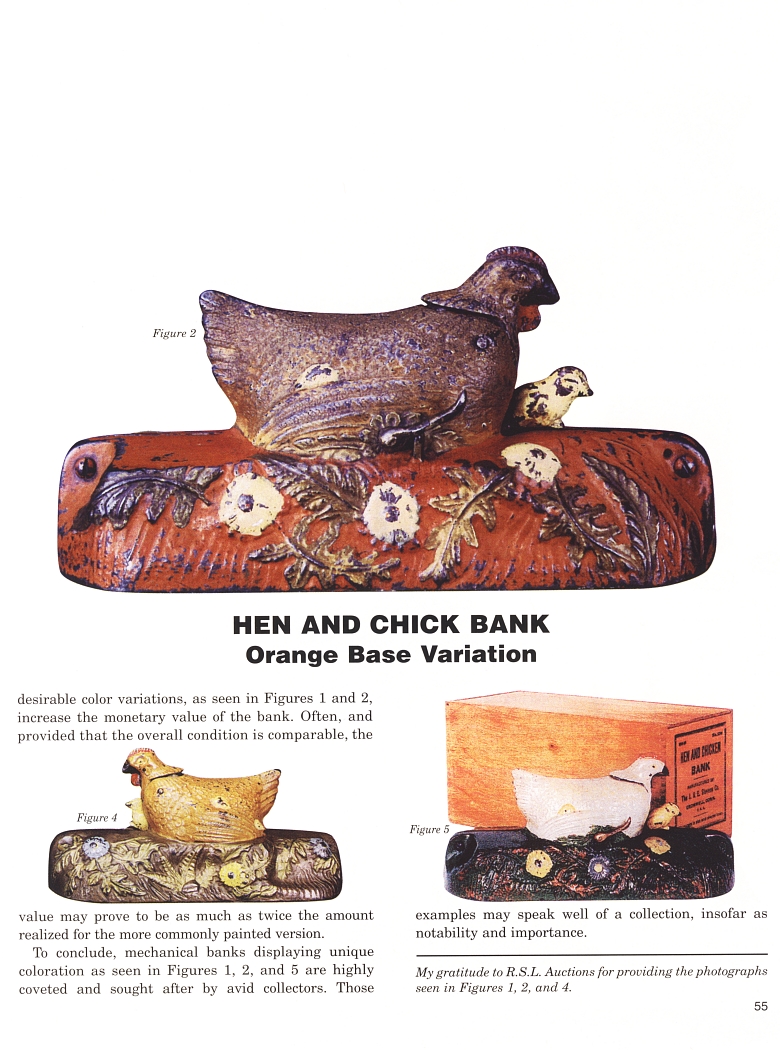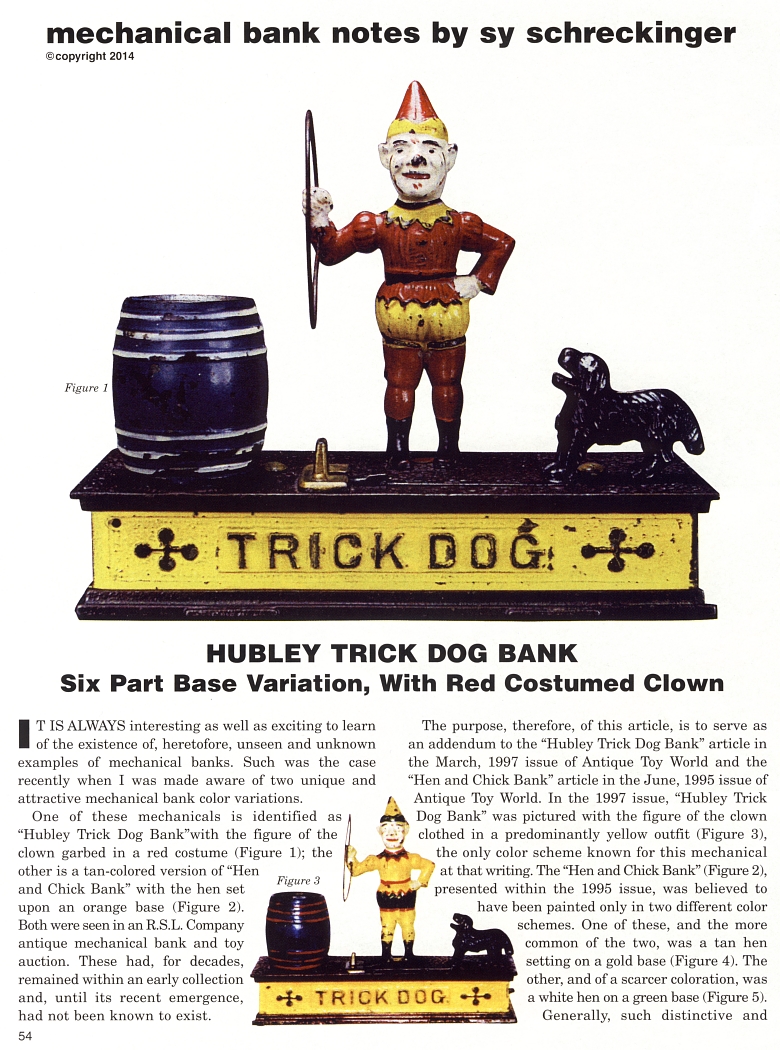|
Hubley Trick Dog
Bank
Six Part base Variation, with Red Costumed Clown
Hen and Chick Bank
— Orange Base Variation
by Sy Schreckinger – ANTIQUE TOY WORLD Magazine – August, 2014
IT IS ALWAYS interesting as well as exciting to learn of the existence
of, heretofore, unseen and unknown examples of mechanical banks. Such
was the case recently when I was made aware of two unique and attractive
mechanical bank color variations.
One of these mechanicals is identified as "Hubley Trick Dog
Bank" with the figure of the clown garbed in a red costume (Figure 1);
the other is a tan colored version of "Hen
and Chick Bank" with the hen set upon an orange base (Figure 2). Both
were seen in an R.S.L. Company antique mechanical bank and toy auction.
These had, for decades, remained within an early collection and, until
its recent emergence, had not been known to exist.
The purpose, therefore, of this article, is to serve as an addendum
to the "Hubley Trick Dog Bank" article in the March, 1997 issue of
Antique Toy World and the
"Hen and Chick Bank" article in the June, 1995 issue of Antique Toy
World. In the 1997 issue, "Hubley Trick a Dog Bank" was pictured with
the figure of the clown clothed in a predominantly yellow outfit (Figure
3), the only color scheme known for this mechanical at that writing.
The "Hen and Chick Bank" (Figure 2), presented within the 1995 issue,
was believed to have been painted only in two different color schemes.
One of these, and the more common of the two, was a tan hen setting on a
gold base (Figure 4). The other, and of a scarcer coloration, was a white hen on a green base
(Figure 5).
Generally, such distinctive and desirable color variations, as seen
in Figures 1 and 2, increase the monetary value of the bank. Often, and
provided that the overall condition is comparable, the value may prove
to be as much as twice the amount realized for the more commonly painted
version.
To conclude, mechanical banks displaying unique coloration as seen
in Figures 1, 2, and 5 are highly coveted and sought after by avid
collectors. Those examples may speak well of a collection, insofar as
notability and importance.
My gratitude to R.S.L. Auctions for providing the photographs seen
in Figures 1, 2, and 4. |


